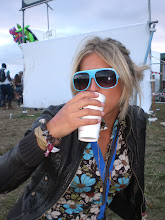Welcome to my "World of the Blog". Blogging is not really my cup of tea, but feel free to read and look at the pictures that follow. Media Studies and Visual Cultures 2008 consists of us students having to create an online masterpiece to show our IT, time management, composition and presentation skills and allows us to create work through another media for lecturers and potential employers.
The first piece of assessed work featured will be a Text in the City piece set for MSVC 101. This is followed by my own Curriculum Vitae and a passage on what thoughts and feelings I had regarding coming to UWIC to study this course. The work will continue throughout the BA(Hons) degree until 2011, by which time it will hopefully be on par with what a 12 year-old kid can do. Fortunately, it is only assessed for the first year, however expect a lot more content over the following two years - whether it be MSVC 103's Glossary of Terms, various film reviews, outside experiences and copies of assessments and essays.
Enjoy...
The first piece of assessed work featured will be a Text in the City piece set for MSVC 101. This is followed by my own Curriculum Vitae and a passage on what thoughts and feelings I had regarding coming to UWIC to study this course. The work will continue throughout the BA(Hons) degree until 2011, by which time it will hopefully be on par with what a 12 year-old kid can do. Fortunately, it is only assessed for the first year, however expect a lot more content over the following two years - whether it be MSVC 103's Glossary of Terms, various film reviews, outside experiences and copies of assessments and essays.
Enjoy...







